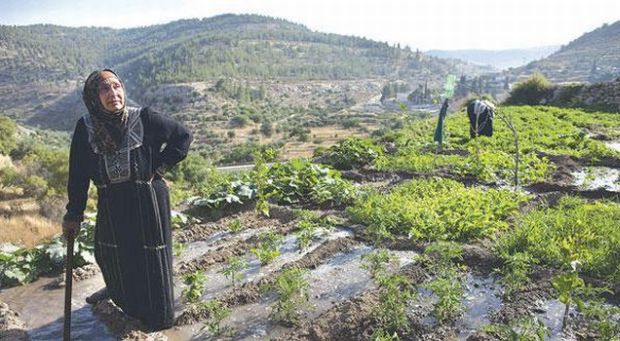The sites were added during meetings on Saturday and Sunday in the Qatari capital Doha, which also saw sites from the Netherlands, Japan, and South Korea added to the list—bringing the total number of UNESCO World Heritage sites to 1,001.
The Palestinian Authority’s efforts to add the village of Battir, its sluice gates and ancient terraces, in the West Bank to the list finally bore fruit. The site now joins Bethlehem’s Church of the Nativity as Palestine’s second representative on the list.
Following the announcement, Palestinian Minister of Tourism and Antiquities Rola Maiah said : “We submitted an urgent application to include Battir Village on the UNESCO World Heritage List. Our application was backed by 11 votes, three members objected, and seven members abstained from voting.”
Maiah added that the vote was conducted via a secret ballot, “at our [the Palestinian Authority’s] request.”
She said UNESCO would now be “held responsible” for the village’s protection and should “not allow the [Israeli] occupation forces do any harm to it”
Having expressed astonishment at the delay in adding Battir to the list, the village’s residents cooperated with the Palestinian tourism ministry to prepare a dossier about the village to be presented to UNESCO.
The villagers have long feared that a concrete wall Israel is planning to build running through Battir to separate Palestinian residents from Jewish settlers would cause harm to the village’s ancient Roman-era aqueduct, still used by the villagers today to supply water for agriculture.
Also joining the list this year is Al-Balad, the historic district of Jeddah. Located near the Gate of Mecca adjacent to the Red Sea’s eastern shores, Al-Balad was established in the 7th century CE. It was once considered a major harbor for marine trade across the Indian Ocean through which goods were brought into the Muslim world’s holiest city. It also received Muslim pilgrims arriving by sea, making it a thriving multicultural center. The city’s unique architecture is similar to that of Jeddah’s old houses that were built by the city’s merchants in the late 19th century CE, while its elegant shore-side buildings reflect the ideas and handicrafts of the different cultures that passed through as a result of the vibrant trade.
Al-Balad now joins the 1st-century CE Nabataean complex Mada’in Saleh (also known as Al-Hijr) in the Medina region and the Saad Bin Saud Palace in Al-Diriyah (the first capital of the Saud dynasty from 1744 to 1818) as the Kingdom’s third representative on the list.
And thanks to the support of Algeria, Lebanon and Turkey, the Erbil Citadel is now also a UNESCO World Heritage site. Located in Erbil, the capital of the autonomous Kurdistan region of Iraq, and famous for its unique “fan-like” architecture, the Citadel and its dominating walls were built in the 19th century CE, at the end of the Ottoman period in Erbil. But the Citadel sits atop a huge oval hill that has been inhabited since the 5th century BCE, and during its 6,000-year history, many generations have settled in the area and constructed buildings there—archeological research has discovered remnants of past settlements buried underneath the citadel.
Other new sites added to the list following the meeting include the Abbey of Corvey, a Benedictine monastery dating back to the Frankish-era and located in the city of Höxter in the North Rhine-Westphalia region in western Germany; the Namhansanseong fortress in South Korea, which is the country’s 11th site on the list; the Tomioka Silk Mill in Tokyo; and the Van Nelle Factory in the Netherlands, considered an icon of 20th-century architecture and an example of the ‘International Style’ movement.

